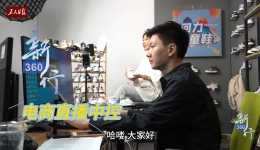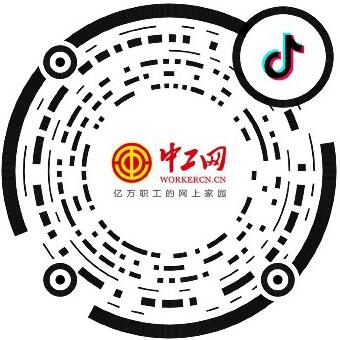Original title: More personal income, lower enterprise costs, which is compatible with social and economic development, but also has the risk of circumventing the law (introduction)
Where will "Shared Employees" go? Subject
Worker's Daily - Zhao Huan, reporter of China Industrial Network
Reading tips
"Shared designers", "shared programmers" and "shared accountants" are common in the workplace. These "shared employees" generally do not sign fixed contracts with enterprises, but conduct short-term cooperation with enterprises on a certain project.
In an information technology company in Beijing, delivery engineer Zhao Songsong is busy following up the project progress, but his identity is somewhat special - "sharing staff". In the whole office area, many employees, like him, serve more than one company.
Nowadays, the use of "shared employees" like Zhao Songsong has become a new choice for many enterprises. "shared designers", "shared programmers" and "shared accountants" are common in the workplace. These "shared employees" generally do not sign fixed contracts with enterprises, but conduct short-term cooperation with enterprises on a certain project.
It has become a new employment mode
The reporter learned that "sharing employees" is not a new thing. As early as four years ago, it has been widely used in catering, logistics and other service industries. In 2020, some e-commerce platform companies and catering and accommodation industry enterprises, as well as some enterprises whose peak production and low production just complement each other, have carried out "labor sharing" cooperation.
Chu Junhua, deputy director of the Legal Service Center of the Beijing Federation of Trade Unions, said in an interview with the Workers' Daily that the "sharing employment" model that emerged four years ago is a way of labor adjustment between enterprises with surplus employees and enterprises with shortage of employees under special circumstances, so as to achieve joint efforts of two or more enterprises to overcome difficulties. The "sharing employees" model mentioned at the moment can adapt to the employment needs of the existing labor market, allowing enterprises and workers to choose independently, which not only saves the employment costs of enterprises, but also enables workers to be "shared" by multiple enterprises at the same time, increasing their own income. From this perspective, "sharing employees" has become a new employment model.
Xiao Rui, product manager of an information technology company in Shanghai, told reporters that the so-called "shared employees" in his company can be divided into two categories: non long-term outsourcing employees and freelancers. He said that many large IT companies cooperate with outsourcing companies, so there will be many non long-term outsourcing employees and regular employees working together, which is generally a project system. "There are relatively few freelancers, and the company may recruit freelancers in some non main businesses," said Xiao Rui.
Liang Chao, a freelancer from Jining, Shandong Province, is currently the "sharing designer" of an e-commerce enterprise in Beijing. Recently, he often held online video conferences with the person in charge of the marketing department of the enterprise to discuss the design idea of the product warm-up poster. He told reporters that he usually mainly undertakes planning scheme, activity copy writing and material design.
"Generally speaking, I take jobs from four or five companies at the same time. The office is flexible and can be completed within the specified time." Liang Chao said that he has handled at most seven projects at the same time. "Compared with working in one company before, the income has increased by about 40%."
Where does the extra income of individuals come from
The head of the marketing department of e-commerce enterprises served by Liang Chao told reporters that they mainly used the "sharing staff" mode in graphic design, new media copywriting and other work. For example, for product promotion on social platforms, "shared employees" need to write promotion posts, produce product brochures for customers, and "shared employees" need to design layout. "By recruiting 'shared employees', we have saved a lot of labor costs," said the person in charge.
With more income from employees and lower costs, where does the extra income from employees come from? Xiao Rui revealed to reporters that enterprises do not need to sign a formal contract with "shared employees", which can save enterprises' "five insurances and one fund" expenses. After the project cooperation, many enterprises will choose to pay salaries to "shared employees" by direct transfer, which avoids personal income tax.
The "employee sharing" model not only increases employees' income, but also reduces the cost of the enterprise. Behind the seemingly win-win situation, many netizens have complained, "Is it not outsourcing or temporary workers?" "Income+50%, task volume+150%?" "The company wants to use you, but also does not want to take full responsibility..."
In response, Shen Jianfeng, director of the Academic Committee of the Law School of the China Institute of Labor Relations, told the reporter of the Workers' Daily that the above comments hit the essence of the problem to a certain extent. He believes that the emergence of the current "employee sharing" model is the result of multiple factors: first, the specific workload of the unit is not saturated, and it is impossible to set up special posts; Second, the division of work is becoming more and more refined, and professional work is completed by special personnel; Third, some enterprises adopt subdivision employment strategies to avoid the obligation of labor law; Fourthly, the employment relationship is developing in the direction of spiritual activation.
"Therefore, this phenomenon is compatible with social and economic development, but also has the risk of avoiding the law. It should be objectively analyzed, classified, qualitative and regulated," Shen Jianfeng said.
Long term development needs further standardization
Chu Junhua said that if "shared employees" want to develop in a healthy and long-term way, they need to strengthen guidance and norms to play a role in promoting stable employment. The reporter learned that at the National Two Sessions last year, some CPPCC members put forward suggestions on the "sharing of employees" model, mainly including the development of a unified version of the third-party agreement contract model, the standardization of social security payments, welfare benefits and other issues of lenders and borrowers, and the establishment and improvement of the "sharing of employees" platform to ensure the effective docking of enterprises of the same type.
At present, the mode of "sharing employees" among enterprises has been explored in some cities. In Xianning City, Hubei Province, the local government has explored and established the "Employee Sharing Alliance", which is used to coordinate with each other through the "Employee Sharing" platform to alleviate the employment problem. In Huai'an City, Jiangsu Province, nearly 40000 employees of Huai'an Economic Development Zone were included in the "shared employees" cooperation platform, initially realizing the internal circulation and optimized allocation of human resources.
Chu Junhua believed that through the establishment of a regional and even national online platform for sharing employment, the labor force can flow normally in the region or across the country, and the coordination and cooperation between enterprises for surplus and shortage will be standardized. "This will play a positive role in solving the contradiction between surplus and shortage, improving the efficiency of human resource allocation and stabilizing employment."
In view of the current phenomenon that more and more freelancers become "shared employees", Shen Jianfeng believes that this is a phenomenon that one worker provides unstable labor benefits for multiple enterprises at the same time. If you want to regulate this, you need to first characterize it according to the employment method, and then apply the law.
"The basic prototype of China's current labor law and social insurance law is the establishment of a labor relationship between a worker and an employer. When a worker serves multiple enterprises at the same time, even if the labor relationship is recognized, the law is not applicable." Shen Jianfeng appealed that with the diversification of employment methods, The current law should recognize the system of multiple employers and multiple labor relations. In addition, basic legal protection should also be provided for "shared employees" who have not identified labor relations. "We should establish a social insurance system suitable for such flexible employment, and a bottom line protection system for workers in line with the working pattern of multiple employers," Shen Jianfeng said.


















